Todays post is dedicated to those of you who love to use nothing but the purest and the finest quality plant preparations on your body. In my years as a beauty therapist and creative chef of handmade skin and makeup products I've learned a thing or two about making your own natural beauty products at home.
Reasons why you should DIY beauty products
If asked the question “How much do you spend yearly on maintaining your beauty?” most of us would be a little embarrassed to openly put a price tag on our “maintenance”. The truth is that as a collective society we spend billions and billions of dollars a year on beauty products. Even worse, many of us fall victim to clever marketing, which means we buy into the latest beauty fad – whether it is products, treatments or a certain body image.
If we allow ourselves to buy into all the gloss, the truth is that the beauty industry can be a toxic industry to invest in – many products on the market wreak havoc with our health, the well-being of animals and the health of the planet.
The good news is, with a little creativity and research you can make just about anything you need to volumize, clear, hydrate, nourish, repair and tighten your skin. You can become a creative beauty artisan or beauty chef – you can even go further and grow and harvest your own beauty ingredients.
Here are 5 reasons why you should get creative and make some of your own beauty products
- You know exactly what’s in it. Everything you put on your skin is absorbed into your bloodstream. Think of it as filling your body with nutrients, the same way drinking water and eating wholefoods nourishes the skin from the inside out, you can nourish the blood stream with healthy ingredients from the outside in! When you hand craft your own formulas you can be sure that it won’t do damage to your health, hasn’t been unethically produced and hasn’t had a negative impact on the planet.
- It costs a fraction of the manufactured stuff. Some jars of beauty formulas can cost over $300. You can set up your beauty kitchen and make hundreds of products for the same cost
- Its fun and rewarding to create. It’s a great creative outlet, you start with a lavender face mist and before you know it you are making your own mascara and lip stains. There are recipes for everything you can imagine and once you get a collection of ingredients on hand you can start to explore what works best on your skin. You can even start to make gift packs for others.
- Nature knows best. Have you ever noticed that the headline ingredients on many of your favourite brands boasts some kind of ‘botanical or plant based extract’, such as rose, olive oil, aloe vera, rosemary, and the list goes on and on. But for most mainstream beauty products the key natural ingredient has minimal traces of the product within the jar or bottle. For example - you can buy an entire jar of fair-trade no monkey business coconut oil for about $24 at our store. This deeply nourishing beauty ingredient is boldly highlighted on labels everywhere, from shampoos, body lotions, salon treatments to make up - and the $24 jar of coconut oil will do all those products and more from just one jar. Our concept here at Botanical Trader is to simplify and get back to the basics.
- You are saving the environment. Our habit for excessive consumerism is fast draining the planet of natural resources. By making your own beauty products you become a quiet activist for our planet. As long as we continue to support companies making harmful products, they will continue to be produced. My challenge to you today is to see if there is one product in your beauty drawer that you can swap for a natural product that you have made yourself. Start small!
Whatever your skin needs might be, nature has a remedy for you – from pre-mature aging, rosacea, age spots, acne, dry skin, dandruff and so on. Google it! Or spend some time exploring our growing resource of DIY beauty recipes, treatments and ideas.
Some of our favourite recipes are:
Grow + Harvest Your Own Beauty Ingredients
Today consider planting your favourite botanical in a pot that you can grow on your balcony or in your back courtyard. Like growing our own food, growing plants to put on our skin to help nurture and care for our bodies is very rewarding.
Beauty products made with botanical ingredients are good for both the body and planet. Mother nature has a huge selection of key ingredients available from her beauty cabinet, that regenerate, detoxify, enhance cell turn-over, protect against environmental damage, boost cellular activity as well as hydrate and repair the skin.
The beauty industry likes to create luxury and mystique around ‘botanical extracts’ however in reality they are quite easy to grow – and are just as easy to process and turn into your own range of beauty products.
While some sound exotic, others such as Aloe Vera, Chamomile, Lavender, Rose, Rosemary and Calendula, are plants and flowers that can be easily grown in the garden, in small pots or in a window box on a small balcony in the city.
When it comes to choosing plants to use in your homemade beauty products, there certainly is no shortage of choice. In fact, you could even custom make your own skincare by choosing to grow plants that are suited for your own skin type.
Some plants are great at soothing irritated skin or clearing up acne while others hydrate and nourish. To get an idea of what plants are good for what check out this post.
So now that you have grown your plants - what next?
Here are some ways on how you can harvest your beauty plants and turn them into key ingredients which you can use to make your own pampering green beauty products.
Gels: Some plants are filled with a gel like substance that can be scraped and used directly in handmade beauty products. Common plants include aloe vera and cucumber.
Dried: Many herbs and plants can be dried, generally the flower or leaves are used – or can be grinded down to a powdered form. Grinding plants to powder formulation is commonly used for the root of a plant. It’s also best to dry your herbs and flowers before using them in oil infusions if you intend on using the infusions in waterless products without preservatives.
You can dry your plants in a dry room, a dehydrator or in the oven at a very low temperature. Flower petals and thin leaves will take a very short time to dry (an hour or two in an oven) but fruit, thick leaves, and roots will take much longer depending on what it is and how thinly you sliced the material. Don’t be surprised if it takes a couple of days!
To ground into powders use a coffee grinder or food processor once the plant is fully dried, then sift it to remove any large particles.
Water Infusion: The best way to make a water infusion is to pick your fresh botanicals and put them in a glass bowl. Pour hot water over the botanicals and let steep for 4 hours or so [the longer you leave it the more fragrant it becomes]. Strain the water and discard of the botanicals. The water makes a great base for beauty products or can be used alone as a linen spray, room spray or face mist.
Oil Infusion: We do a similar process for our carrier oils in our botanical perfumes. The idea of this process is to infuse a carrier oil with the aroma and healing properties of the botanicals. To infuse the carrier oil you will need to use dry botanicals otherwise it will grow mould. Simply put dry botanicals in a glass jar with your carrier oil - you can either solar infuse the oil by sitting it on a sunny windowsill or alternatively you can put it in a dark and cool cupboard. Ideally you want to infuse the botanicals in the oil for at least 6 weeks if you can. When the infusing time is up simply strain the oil and bottle it up to use direct on your skin or in your beauty products.
Distil: This is how essential oils are made. Basically the botanicals are put in a canister and then steam is released. The steam ruptures the molecules in the plant and carries the particles of essential oil and other constituents through a cooling system into another container. When the steam passes through the cooling unit, it reverts back to water, where it separates from the essential oil. You can read more about botanical distilling in this helpful article.


